Single-pilot directory: The single pilot lineup

Since the onset of the recession, some models have gone by the wayside. Others went through production setbacks. Newly formed Textron Aviation axed the King Air B200, Premier IA, and Citations Mustang, CJ1+, and CJ2+. Eclipse went bankrupt, stalling sales of its Eclipse 550, and then merged with Kestrel Aircraft to continue production under the newly created ONE Aviation. Cirrus had layoffs and production cutbacks, and then was bought by a Chinese firm.
Today, the tables seem to be turning. Big iron activity is slowing, and single-pilot turbine airplanes are showing some hopeful signs. Cirrus is delivering its much-awaited single-engine jet, the SF50 Vision. Daher—formerly Socata—dropped its TBM 850 and recently rolled out its new TBM 910 and 930. Embraer’s Phenom 100 and 300 immediately met with success. The HondaJet’s first deliveries came last year. Piper added the M600. Textron came out with the King Airs C90GTx, 250, and 350i and 350ER models—plus the Citations M2, CJ3+, and CJ4. The models most immune to the recession: single-engine turboprops. According to the General Aviation Manufacturers Association, 298 single-engine turboprops were delivered in 2009. In 2016, that number rose to 467.
This issue’s single-pilot turbine aircraft directory gives you a snapshot of the market. One caveat: The entries include certified passenger airplanes only, so you won’t see any agplanes, helicopters, military trainers, or Experimentals. Maybe next time.
—Thomas A. Horne, Turbine Pilot Editor
Beechcraft King Air C90GTx
A royal legacy
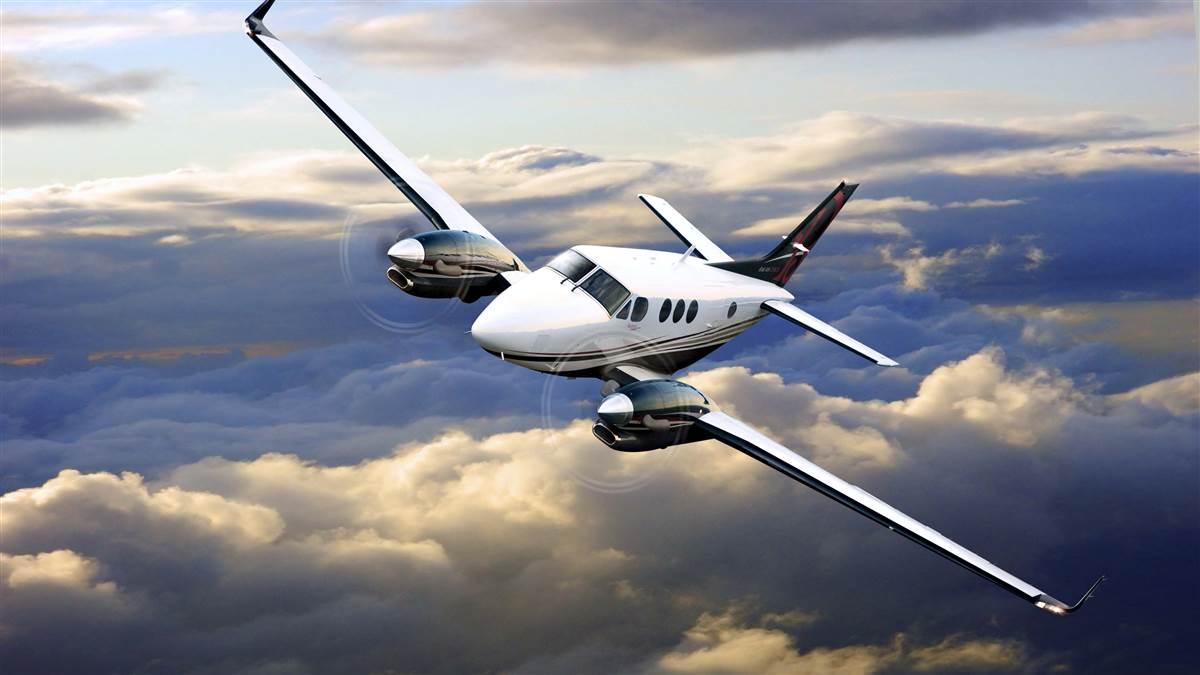 The King Air C90GTx is the latest iteration of Beechcraft’s popular entry-level turboprop and a direct descendant of the first King Air introduced in the mid-1960s. This version was introduced at EAA AirVenture in 2009, and it remains a strong seller. Popular with owners for its solid performance and great ramp presence, the C90GTx is adored by pilots for stable flying characteristics. Beechcraft avoided going with Garmin for the panel, instead opting for the Rockwell Collins Pro Line Fusion found in larger aircraft. A pair of Pratt & Whitney PT6A-135A engines rounds out the package.
The King Air C90GTx is the latest iteration of Beechcraft’s popular entry-level turboprop and a direct descendant of the first King Air introduced in the mid-1960s. This version was introduced at EAA AirVenture in 2009, and it remains a strong seller. Popular with owners for its solid performance and great ramp presence, the C90GTx is adored by pilots for stable flying characteristics. Beechcraft avoided going with Garmin for the panel, instead opting for the Rockwell Collins Pro Line Fusion found in larger aircraft. A pair of Pratt & Whitney PT6A-135A engines rounds out the package.
The King Air C90GTx doesn’t require a type rating. Initial training at a simulator center is anywhere from five to 12 days.
SPEC SHEET
Beechcraft King Air C90GTx Price: $3.595 million
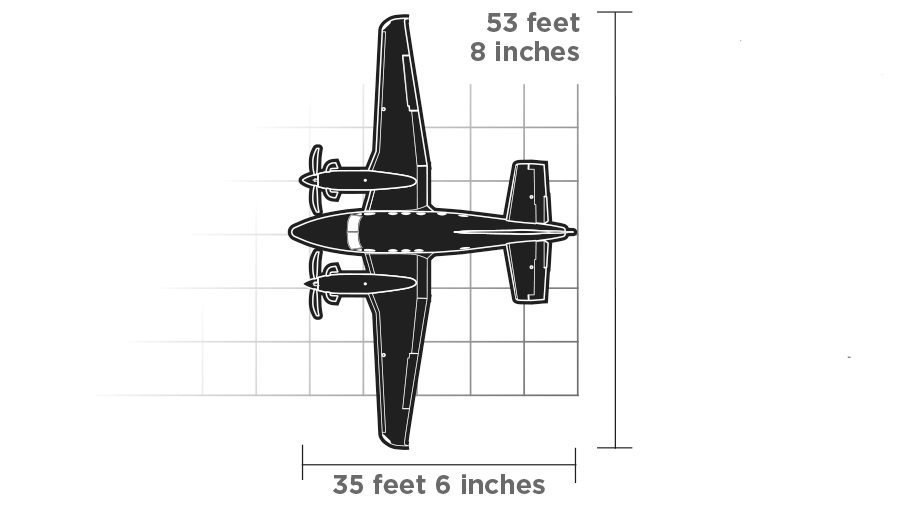 Powerplants | 2 Pratt and Whitney PT6A-135A,
Powerplants | 2 Pratt and Whitney PT6A-135A,
550 shp ea
Seats | 8
IFR range at high-speed cruise | 1,260 nm
Full-fuel payload | 707 lb
Max takeoff weight | 10,485 lb
Takeoff distance | 1,984 ft
High-speed cruise | 272 kt
Avionics | Rockwell Collins Pro Line Fusion
http://beechcraft.txtav.com/en/king-air-c90gtx
Photo courtesy Beechcraft
Beechcraft King Air 250
Stretch Armstrong
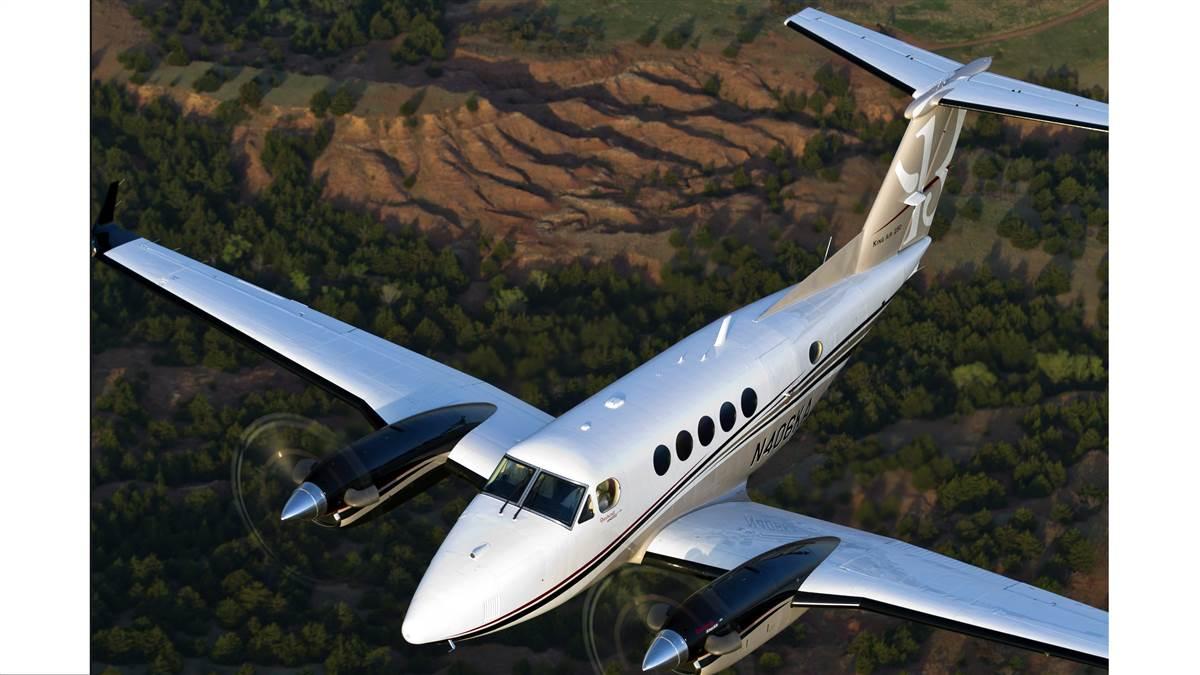 Take the King Air C90, stretch it, throw on some more power, bump up the horizontal stabilizer, and you’ve more or less created a King Air 250. Originally called the Super King Air, the 250 is an impressive eight feet longer than the C90 series, which means you can carry two more people. At 12,500 pounds maximum takeoff weight, the airplane just touches the limit of what you can fly without a type rating. In the spirit of making it easy for pilots to step up through the product line, the 250 features the same Rockwell Collins Pro Line Fusion panel as the smaller C90GTx.
Take the King Air C90, stretch it, throw on some more power, bump up the horizontal stabilizer, and you’ve more or less created a King Air 250. Originally called the Super King Air, the 250 is an impressive eight feet longer than the C90 series, which means you can carry two more people. At 12,500 pounds maximum takeoff weight, the airplane just touches the limit of what you can fly without a type rating. In the spirit of making it easy for pilots to step up through the product line, the 250 features the same Rockwell Collins Pro Line Fusion panel as the smaller C90GTx.
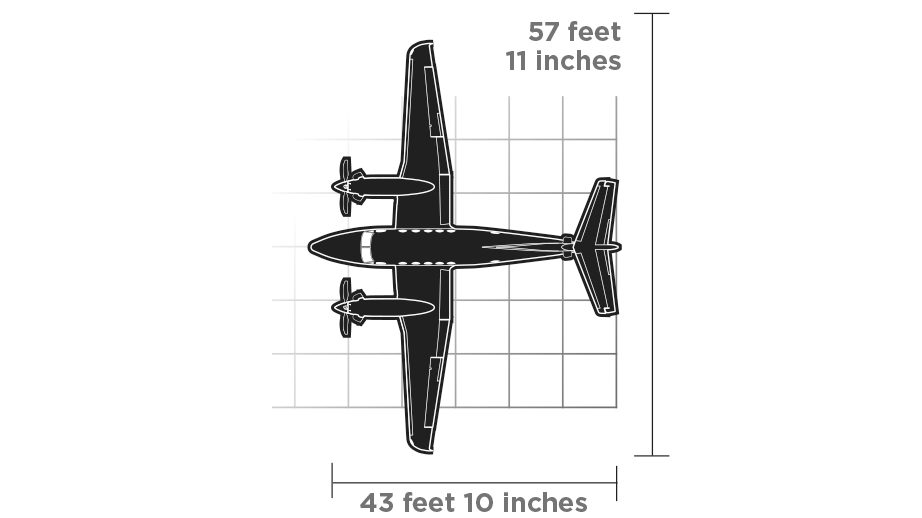 SPEC SHEET
SPEC SHEET
Beechcraft King Air 250 Price: $5.995 million
Powerplants | 2 Pratt and Whitney PT6A-52, 850 shp ea
Seats | 10
IFR range at high-speed cruise | 1,720 nm
Full-fuel payload | 115 lb
Max takeoff weight | 12,500 lb
Takeoff distance | 2,111 ft
High-speed cruise | 310 kt
Avionics | Rockwell Collins Pro Line Fusion
Beechcraft King Air 350i/350ER
Go ahead, bring your friends
 The King Air 350i is a competitive package of speed, range, and load-carrying capability. With a range of more than 1,800 miles, and the ability to top it off and still load eight people, the 350i is a true workhorse. With reduced fuel the aircraft can carry 11 passengers in a double-club configuration, and baggage can be stowed either aft or in wing lockers. For special missions, the 350ER adds 236 more gallons of fuel, and a range of mission-specific interior configurations.
The King Air 350i is a competitive package of speed, range, and load-carrying capability. With a range of more than 1,800 miles, and the ability to top it off and still load eight people, the 350i is a true workhorse. With reduced fuel the aircraft can carry 11 passengers in a double-club configuration, and baggage can be stowed either aft or in wing lockers. For special missions, the 350ER adds 236 more gallons of fuel, and a range of mission-specific interior configurations.
 SPEC SHEET
SPEC SHEET
King Air 350i/350ER Price: $6.995 million (350i); $8.446 million (350ER)
Powerplants | 2 Pratt and Whitney PT6A-60A,
1,050 shp ea
Seats | 11
IFR range at high-speed cruise | 350i: 1,806 nm; 350ER: 2,692 nm
Full-fuel payload | 350i: 1,534 lb; 350ER: 1,953 lb
Max takeoff weight | 350i: 15,000 lb; 350ER: 16,500 lb
Takeoff field length | 350i: 3,300 ft; 350ER: 4,057 ft
High-speed cruise | 350i: 312 kt; 350ER: 303 kt
Avionics | Rockwell Collins Pro Line Fusion
Cessna Caravan 675
Built for business—and grins
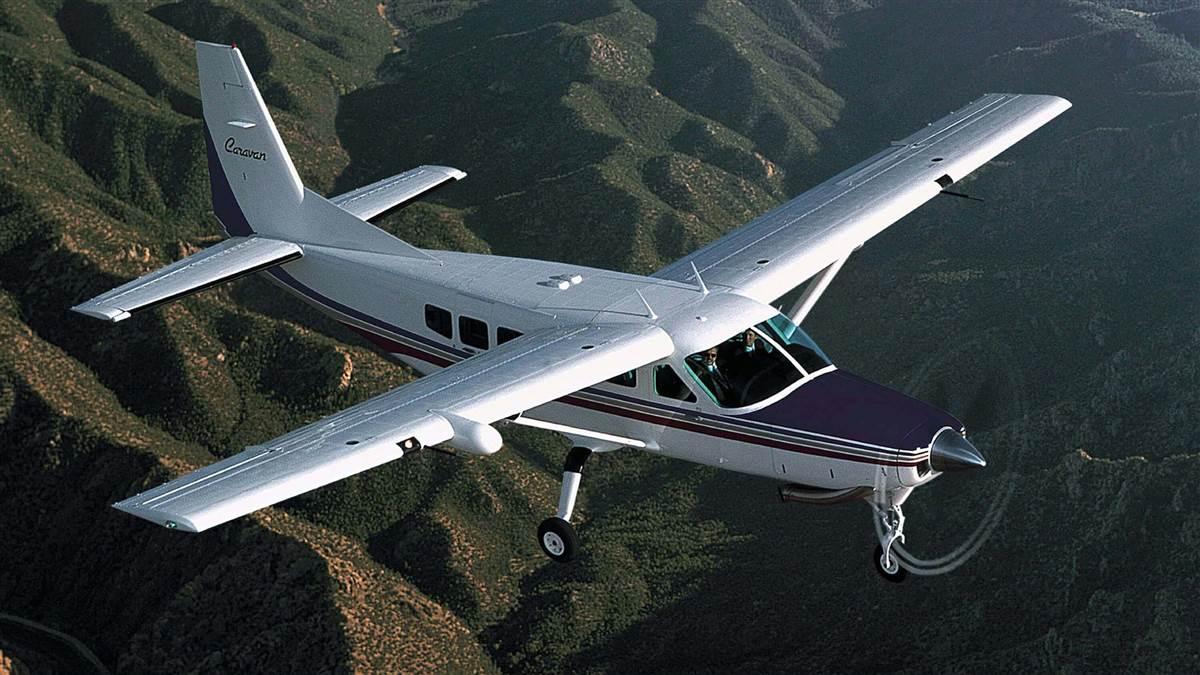 The Caravan has been popular from its start in 1984, when it became the first certified single-engine turboprop. It’s a sturdy, multipurpose, go-anywhere heavy hauler with a strong following among operators in remote areas where runways are unimproved and missions varied. Want to sit tall on the ramp and fly as a seaplane? Then Caravans can be fitted with straight or amphibious floats. A high-density seating option provides seats for up to 14 passengers. The Oasis option, on the other hand, gives customers an executive interior with an eight-seat, surprisingly luxurious cabin.
The Caravan has been popular from its start in 1984, when it became the first certified single-engine turboprop. It’s a sturdy, multipurpose, go-anywhere heavy hauler with a strong following among operators in remote areas where runways are unimproved and missions varied. Want to sit tall on the ramp and fly as a seaplane? Then Caravans can be fitted with straight or amphibious floats. A high-density seating option provides seats for up to 14 passengers. The Oasis option, on the other hand, gives customers an executive interior with an eight-seat, surprisingly luxurious cabin.
 SPEC SHEET
SPEC SHEET
Cessna Caravan Price: $1.95 million
Powerplant | Pratt & Whitney PT6A-114A, 675 shp
Seats | 10-14
IFR range at high-speed cruise | 909 nm
Full-fuel payload | 1,081 lb
Max takeoff weight | 8,000 lb
Takeoff distance | 2,055 ft
High-speed cruise | 186 kt
Avionics | Garmin G1000
Cessna Grand Caravan EX

The ultimate Caravan
This is the top-of-the-line Caravan. It has more power, more speed, more payload, and is four feet longer than the standard Caravan. Like the Caravan, the Grand Caravan EX version is often delivered with a cargo pod, which robs 10 knots from the airplane’s maximum cruise speed but lets operators stow plenty of cargo while also freeing up cabin space. The Oasis executive interior is another popular option.
For special missions, the EX can be equipped with hard points on the wings for extra fuel tanks, military, or agricultural hardware.
SPEC SHEET
Cessna Grand Caravan EX Price: $2.528 million
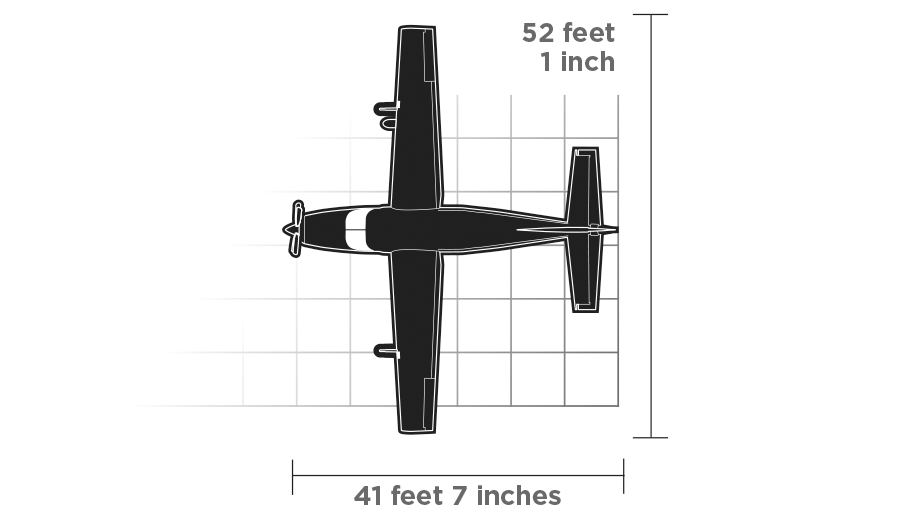 Powerplant | Pratt & Whitney PT6A-140, 867 shp
Powerplant | Pratt & Whitney PT6A-140, 867 shp
Seats | 10-14
IFR range at high-speed cruise | 810 nm
Full-fuel payload | 1,446 lb
Max takeoff weight | 8,807 lb
Takeoff distance | 2,160 ft
High-speed cruise | 195 kt
Avionics | Garmin G1000
Cessna Citation M2
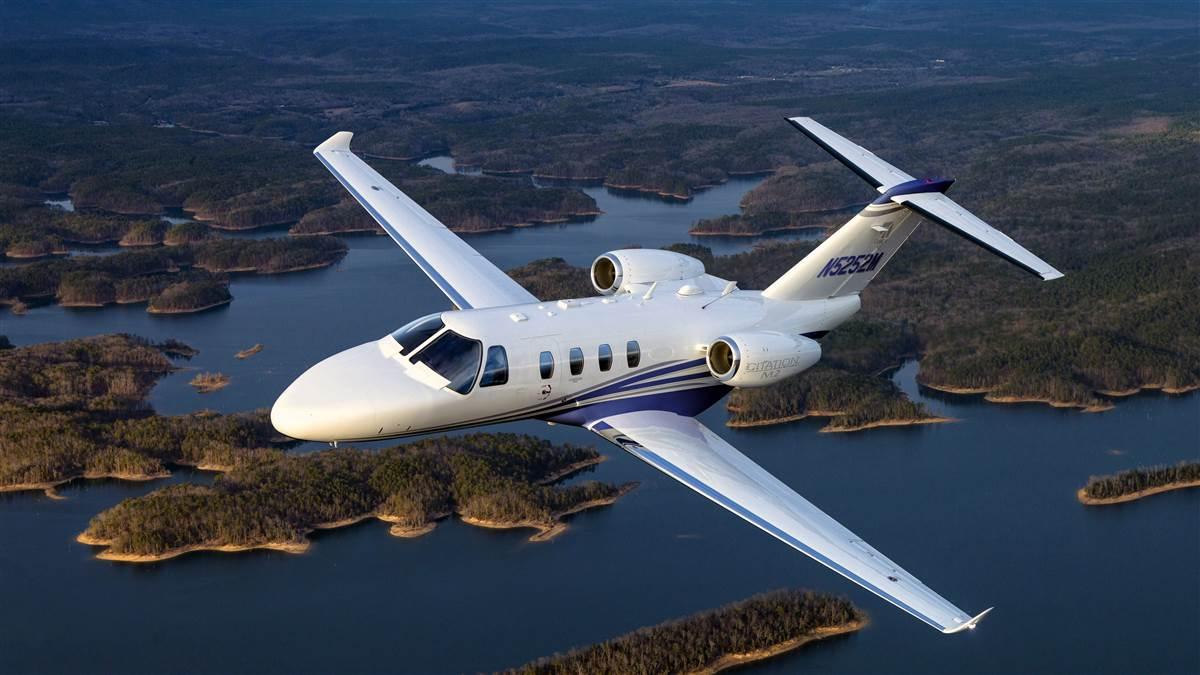 A big step up from a step-up
A big step up from a step-up
The M2 took the place of the Citation 1+, and it offers some of the same allure of the discontinued CJ2 models. It became Textron/Cessna’s entry-level jet with the discontinuance of the Citation Mustang in May 2017. In fact, many Mustang owners have been attracted to the M2 because of its greater speed and range.
Most blame the M2 for the Mustang’s lagging sales and discontinuation.
 SPEC SHEET
SPEC SHEET
Cessna Citation M2 Price: $4.5 million
Powerplant | 2 Williams FJ-44-1AP-21, 1,965 lbst ea
Seats | 7
IFR range at high-speed cruise | 1,184 nm
Full-fuel payload | 514 lb
Max takeoff weight | 10,700 lb
Takeoff field length | 3,210 ft
High-speed cruise | 404 kt
Avionics | Garmin G3000
http://cessna.txtav.com/en/citation/m2
Photo courtesy Cessna
Cessna Citation CJ3+
The flexible SP Citation
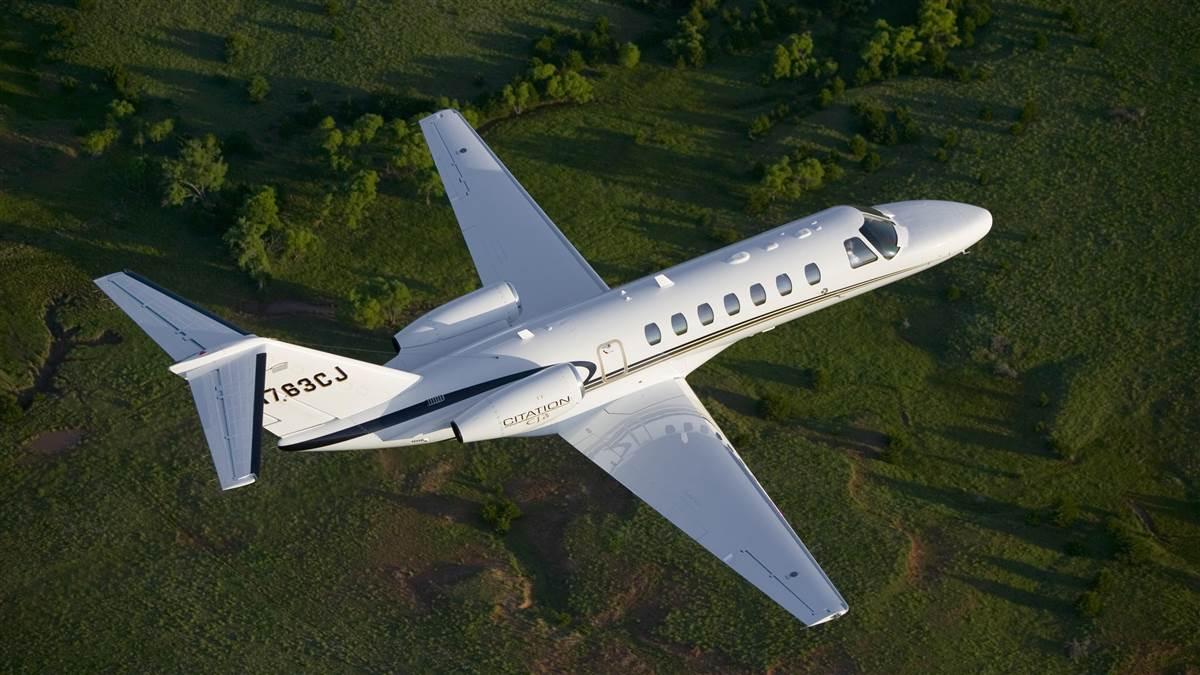 The CJ3+ adds one more niche to the single-pilot Citation line. It gets its popularity from its incremental speed, range, and load-hauling capability over the M2. With a maximum payload of 1,970 pounds and a 703-gallon maximum fuel capacity, there’s plenty of room for tradeoffs between carrying a few passengers long distances or filling the cabin and making shorter hops.
The CJ3+ adds one more niche to the single-pilot Citation line. It gets its popularity from its incremental speed, range, and load-hauling capability over the M2. With a maximum payload of 1,970 pounds and a 703-gallon maximum fuel capacity, there’s plenty of room for tradeoffs between carrying a few passengers long distances or filling the cabin and making shorter hops.
Its predecessor, the CJ3, holds its value well on the used market anddiffers from the CJ3+ chiefly in its use of the Rockwell Collins Pro Line 21 avionics suite.
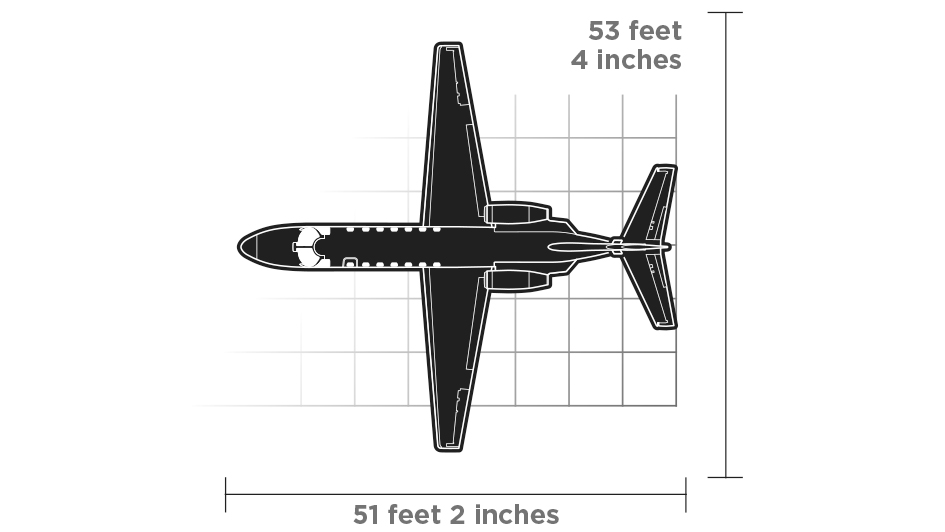 SPEC SHEET
SPEC SHEET
CESSNA Citation CJ3+ Price: $7.995 million
Powerplants | 2 Williams FJ-44-3A, 2,820 lbst ea
Seats | 9
IFR range at high-speed cruise | 1,802 nm
Full-fuel payload | 820 lb
Max takeoff weight | 13,870 lb
Takeoff field length | 3,180 ft
High-speed cruise | 416 kt
Avionics | Garmin G3000
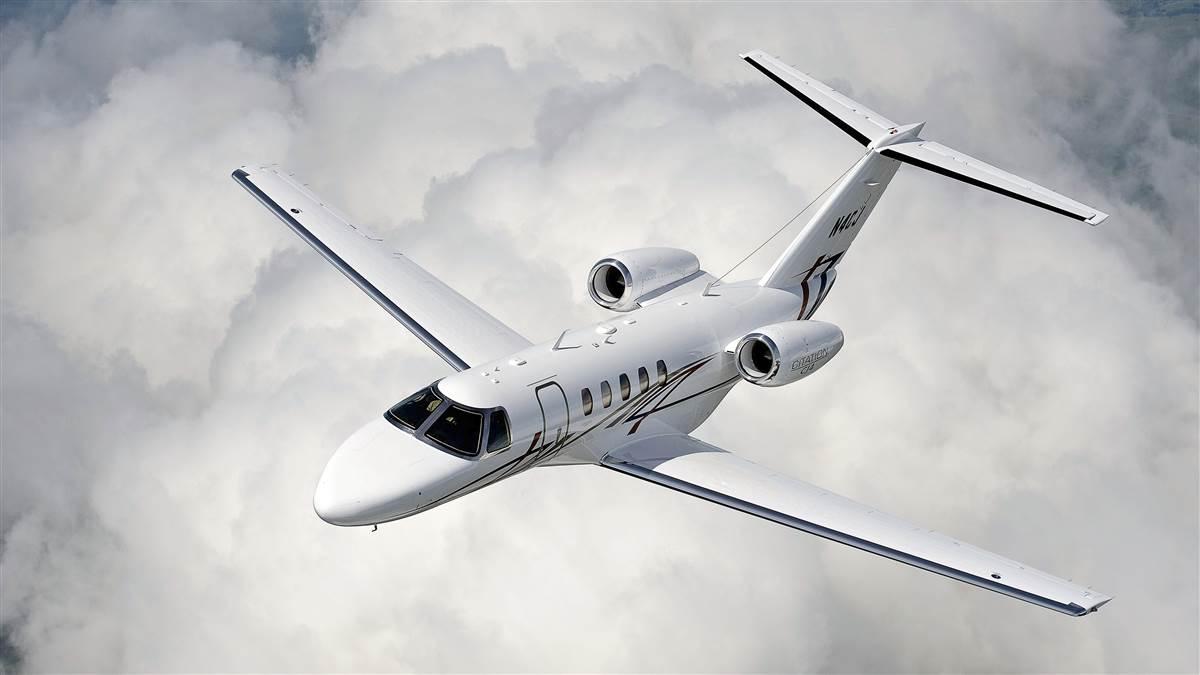 Cessna Citation CJ4
Cessna Citation CJ4
Top-of-the-line CJ
With capabilities that challenge some mid-size jets, the CJ4 is the largest and fastest of Textron/Cessna’s single-pilot jets. The first CJ4, a stretched version of the CJ3, rolled off the assembly line in 2009.
Although its maximum takeoff weight is three and a half tons more than that of the M2, the CJ4 shares a common type rating—as does the CJ3+.
 SPEC SHEET
SPEC SHEET
Cessna Citation CJ4 Price: $8.995 million
Powerplants | 2 Williams FJ-44-4A, 3,621 lbst ea
Seats | 10
IFR range at high-speed cruise | 1,926 nm
Full-fuel payload | 1,122 lb
Max takeoff weight | 17,110 lb
Takeoff field length | 3,410 ft
High-speed cruise | 451 kt
Avionics | Rockwell Collins Pro Line 21
Cirrus SF50 Vision Jet
Many have tried, Cirrus succeeds with first personal jet
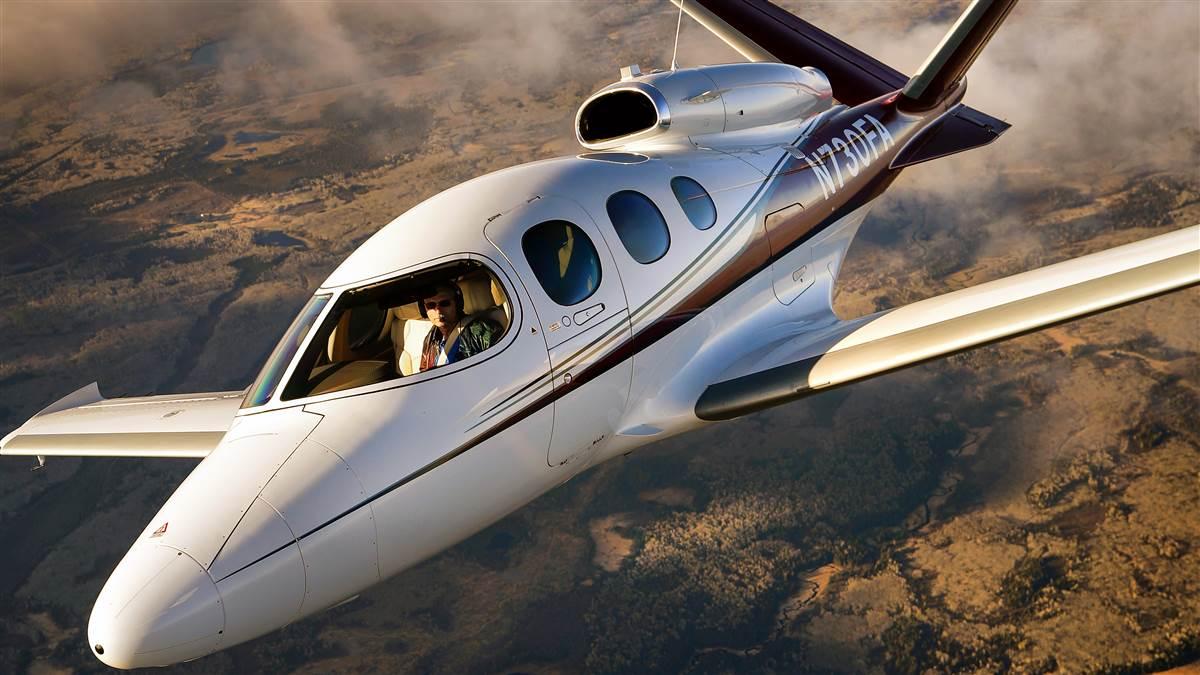 Certified in late 2016with first deliveries shortly thereafter, Cirrus’s Vision Jet is the only civilian certified single-engine jet in production. Cirrus designed it to be a simple step up from its SR series. Every switch, knob, and lever is in virtually the same place on the jet as on the piston airplanes. Designed as a “personal jet,” it is certified to only 28,000 feet; twin-engine business jets normally are certified to at least 40,000 feet. The SF50 also is unique in that it carries a whole-airplane parachute, a Cirrus signature feature.
Certified in late 2016with first deliveries shortly thereafter, Cirrus’s Vision Jet is the only civilian certified single-engine jet in production. Cirrus designed it to be a simple step up from its SR series. Every switch, knob, and lever is in virtually the same place on the jet as on the piston airplanes. Designed as a “personal jet,” it is certified to only 28,000 feet; twin-engine business jets normally are certified to at least 40,000 feet. The SF50 also is unique in that it carries a whole-airplane parachute, a Cirrus signature feature.
The CAPS parachute deploys from the nose, unlike the system on the piston airplanes, which deploys from aft of the cabin. The SF50 also features an unusual seat arrangement that allows easy access for the pilot and flexibility for passengers.
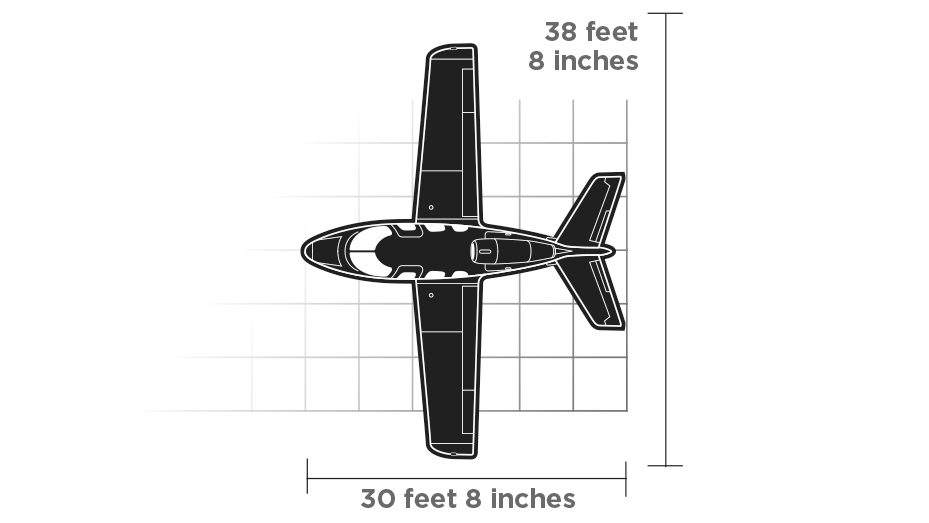 SPEC SHEET
SPEC SHEET
Cirrus SF50 Vision Jet Price: $1.96 million
Powerplant | Williams FJ33-5A turbofan, 1,800 lbst
Seats | 7
IFR range at high-speed cruise | 1,020 nm
Full-fuel payload | 468 lb
Max takeoff weight | 6,000 lb
Takeoff over 50-ft obstacle | 3,192 ft
High-speed cruise | 300 kt
Avionics | Cirrus Perspective by Garmin
Daher TBM 910/930
The ultimate single-engine turboprop?
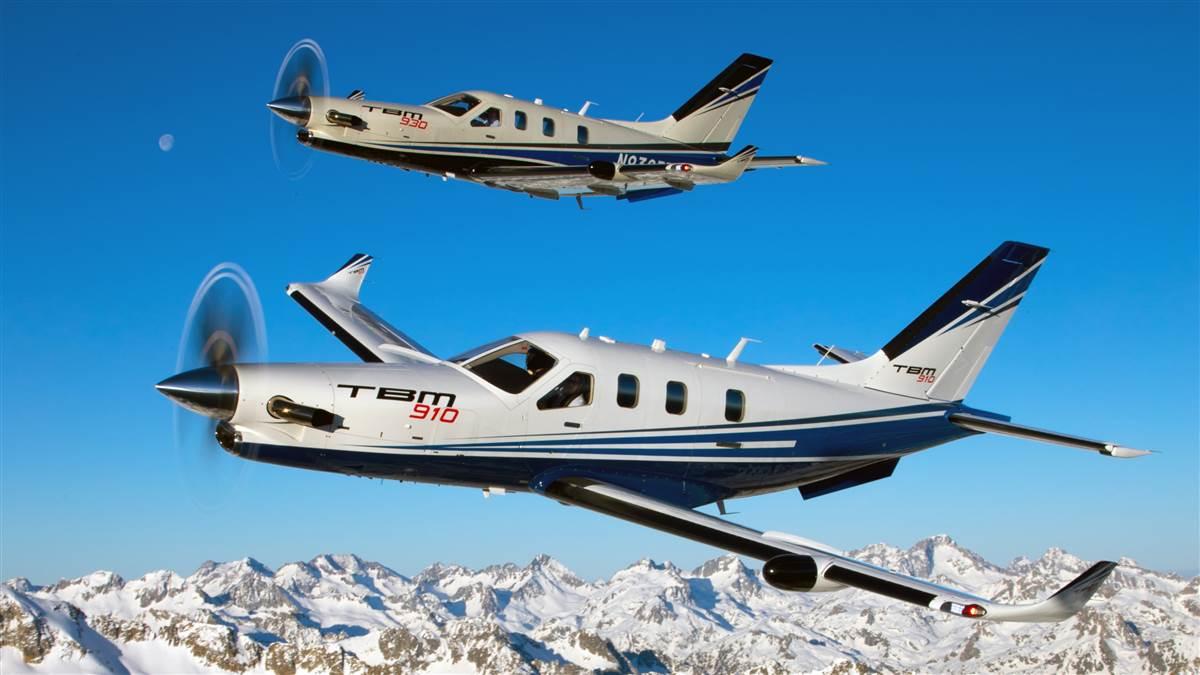 Many pilots find Daher’s TBM series of French-built single-engine turboprops to have the most appealing combination of speed, range, and style for typical stage lengths. The TBM series debuted in 1989, but today’s model 910 and 930 demonstrate just how far an airframe can evolve. Now a 330-knot design thanks to aerodynamic improvements, the new models also feature a single-lever power control, flight envelope protection, and an emergency descent mode to combat hypoxia. Plus, voice alerts, angle of attack indicators, and redesigned control yokes.
Many pilots find Daher’s TBM series of French-built single-engine turboprops to have the most appealing combination of speed, range, and style for typical stage lengths. The TBM series debuted in 1989, but today’s model 910 and 930 demonstrate just how far an airframe can evolve. Now a 330-knot design thanks to aerodynamic improvements, the new models also feature a single-lever power control, flight envelope protection, and an emergency descent mode to combat hypoxia. Plus, voice alerts, angle of attack indicators, and redesigned control yokes.
The 910 and 930 have identical performance specifications and differ only in their avionics. The TBM 910 comes with Garmin’s new G1000Nxi; the 930 features the Garmin G3000.
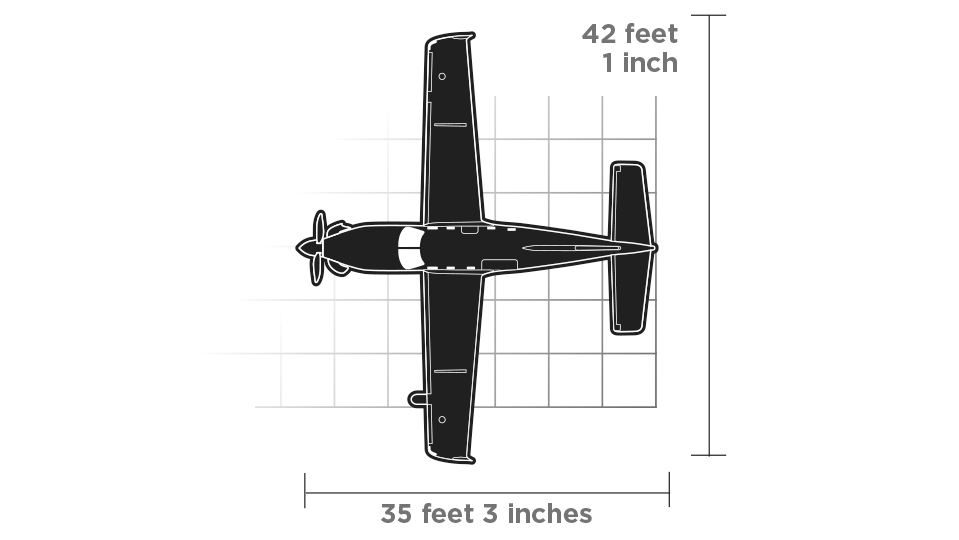 SPEC SHEET
SPEC SHEET
TBM 910/930 Price: $3.9 million (910); $4.2 million (930)
Powerplant | Pratt & Whitney PT6A-66D, 850 shp
Seats | 6
IFR range at high-speed cruise | 1,440 nm
Full-fuel payload | 891 lb
Max takeoff weight | 7,394 lb
Takeoff field length | 2,380 ft
High-speed cruise | 330 kt
Avionics | Garmin G1000Nxi (910); Garmin G3000 (930)
Photo courtesy Daher
Embraer Phenom 100EV
400-knot mini-airliner
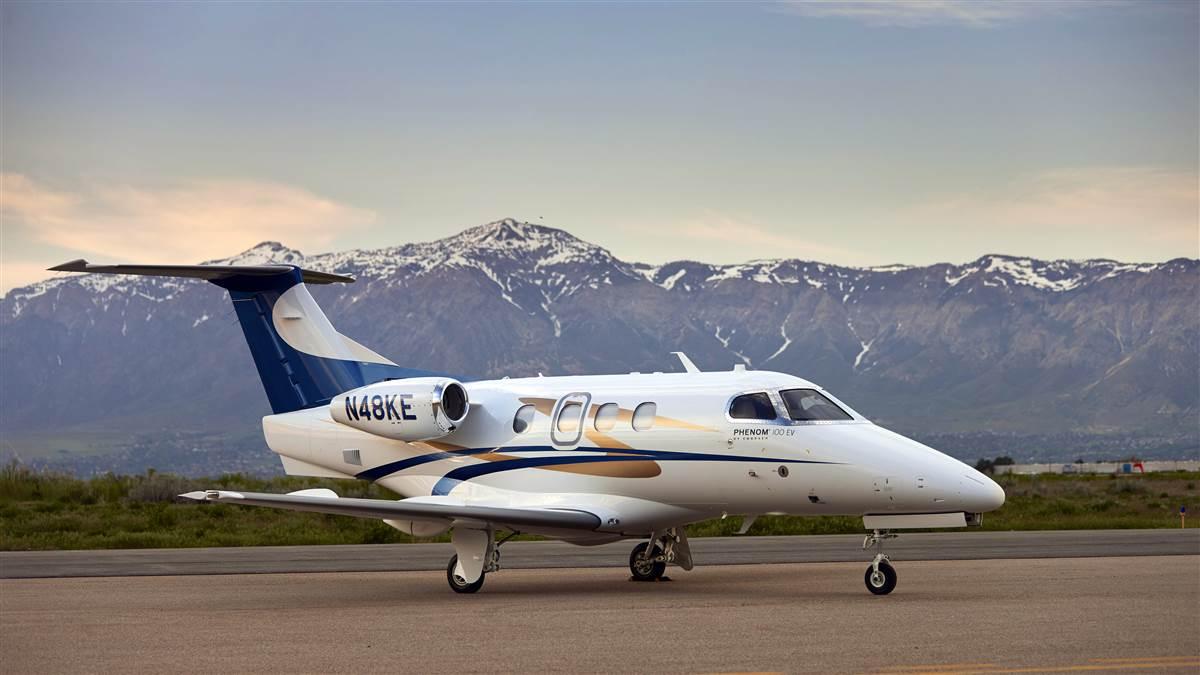 The Phenom 100EV is a faster, upgraded version of the earlier Phenom 100 and 100E. It’s Embraer’s entry-level airplane, with multifunction spoilers that serve as speed brakes and assist in ground braking, FADEC engine controls, and brake-by-wire systems. Although the smallest of the Embraer business jets, the 100EV has a big-iron presence and capabilities. It has a strong ramp presence, plus flight envelope protection; a large airstair door; single-point fueling; externally serviced, flushing lavatory; and Embraer’s signature ram’s-horn control yokes.
The Phenom 100EV is a faster, upgraded version of the earlier Phenom 100 and 100E. It’s Embraer’s entry-level airplane, with multifunction spoilers that serve as speed brakes and assist in ground braking, FADEC engine controls, and brake-by-wire systems. Although the smallest of the Embraer business jets, the 100EV has a big-iron presence and capabilities. It has a strong ramp presence, plus flight envelope protection; a large airstair door; single-point fueling; externally serviced, flushing lavatory; and Embraer’s signature ram’s-horn control yokes.
Since 2014, Embraer has built its Phenoms—and its Legacy 450 and 500—at its Engineering and Technology Center campus in Melbourne, Florida.
SPEC SHEET
Phenom 100EV Price: $4.8 million
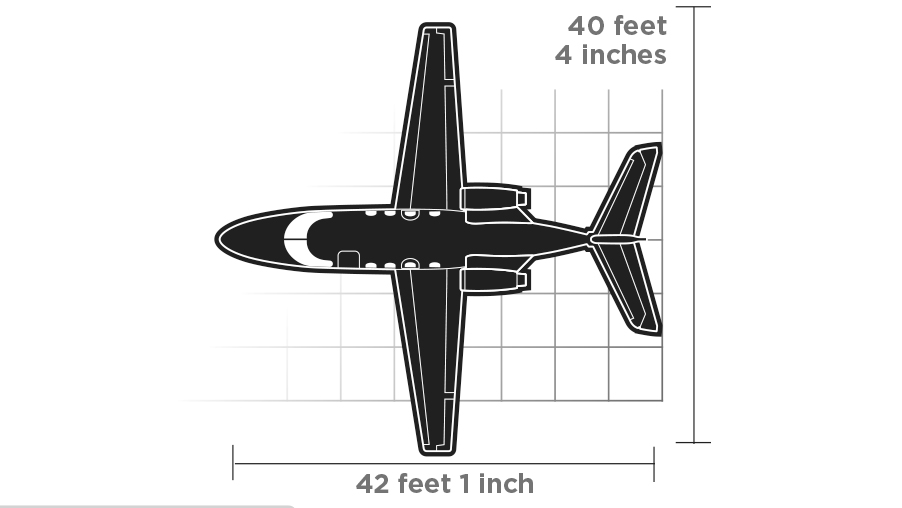 Powerplants | 2 Pratt & Whitney PW617F1-E1, 1,730 lbst ea
Powerplants | 2 Pratt & Whitney PW617F1-E1, 1,730 lbst ea
Seats | 7-8IFR range at high-speed cruise | 1,178 nm
Full-fuel payload | 645 lb
Max takeoff weight | 10,582 lb
Takeoff distance | 3,199 ft
High-speed cruise | 405 kt
Avionics | Prodigy Touch (Garmin G3000)
Embraer Phenom 300
A ‘light jet’ with a mid-size aura
 The Phenom 300 is the Phenom 100EV’s bigger, faster brother. With nearly 400 deliveries, fractional operators Flexjet, NetJets, and Flight Options use Phenom 300s, and Embraer says it’s the most-delivered business jet for the past four years. Most are ordered with seating for eight, including a two-place, side-facing divan—although an 11-seat, high-density configuration also is available. This, plus its speed and range, appeal to corporate and charter operators.
The Phenom 300 is the Phenom 100EV’s bigger, faster brother. With nearly 400 deliveries, fractional operators Flexjet, NetJets, and Flight Options use Phenom 300s, and Embraer says it’s the most-delivered business jet for the past four years. Most are ordered with seating for eight, including a two-place, side-facing divan—although an 11-seat, high-density configuration also is available. This, plus its speed and range, appeal to corporate and charter operators.
Interiors are designed by Embraer and BMW Designworks USA and include fully articulating cabin seats. G3000 avionics provide stall and overspeed protection.
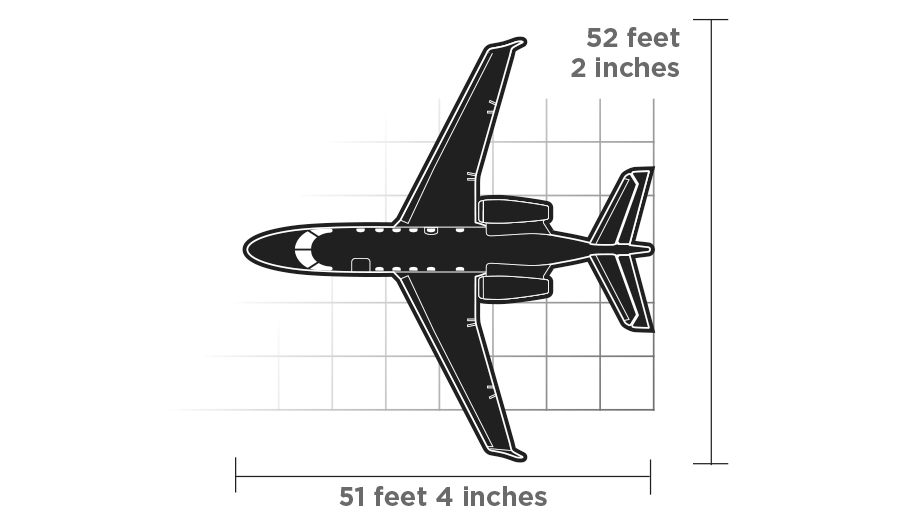 SPEC SHEET
SPEC SHEET
Phenom 300 Price: $9.8 million
Powerplants | 2 Pratt & Whitney PW535E, 3,360 lbst ea
Seats | 10-13
IFR range at high-speed cruise | 1,177 nm
Full-fuel payload | 1,142 lb
Max takeoff weight | 17,968 lb
Takeoff field length | 3,138 ft
High-speed cruise | 453 kt
Avionics | Prodigy Touch (Garmin G3000)
Honda HA–420 HondaJet
Lawn mowers, boats, cars, and now bizjets
 General aviation’s newest twin-enginebusiness jet combines cutting-edge design with modern materials and manufacturing to create a conventionally handling airplane that delivers best-in-class performance. The new model was certified in late 2015, and initial field reports indicate it is living up to Honda’s corporate-wide reputation for quality, durable products. The HondaJet took decades to develop but still comes across as modern and new, especially with its innovative over-the-wing engine mounts—which reduce drag and allow for a greater use of the aft fuselage for cabin and baggage space.
General aviation’s newest twin-enginebusiness jet combines cutting-edge design with modern materials and manufacturing to create a conventionally handling airplane that delivers best-in-class performance. The new model was certified in late 2015, and initial field reports indicate it is living up to Honda’s corporate-wide reputation for quality, durable products. The HondaJet took decades to develop but still comes across as modern and new, especially with its innovative over-the-wing engine mounts—which reduce drag and allow for a greater use of the aft fuselage for cabin and baggage space.
With a top speed of 422 knots, low fuel burn, and speedy climb rate, the HondaJet out-performs its competitors from Cessna and Embraer. However, taking on those established companies will be no easy task. HondaJet is sold through dealers, rather than factory direct like most others in this class.
SPEC SHEET
HondaJet HA–420 Price: $5 million
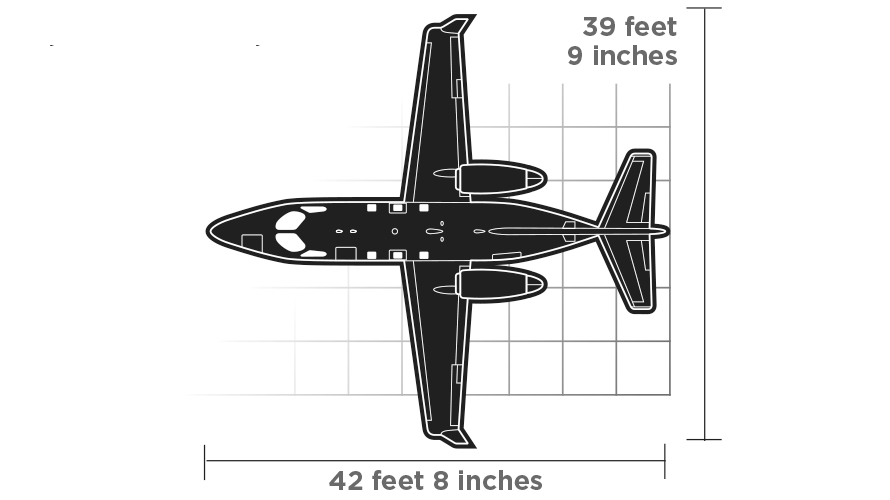 Powerplants | 2 GE Honda Aero HF120, 2,095 lbst ea, derated to 2,050 lbst
Powerplants | 2 GE Honda Aero HF120, 2,095 lbst ea, derated to 2,050 lbst
Seats | 6-7
IFR range at high-speed cruise | 1,206 nm
Full-fuel payload | 551 lb
Max takeoff weight | 10,600 lb
Takeoff distance | <4,000 ft
High-speed cruise | 422 kt
Avionics | Garmin G3000
One Aviation Eclipse 550
Always the underdog, Eclipse light jets soldier on
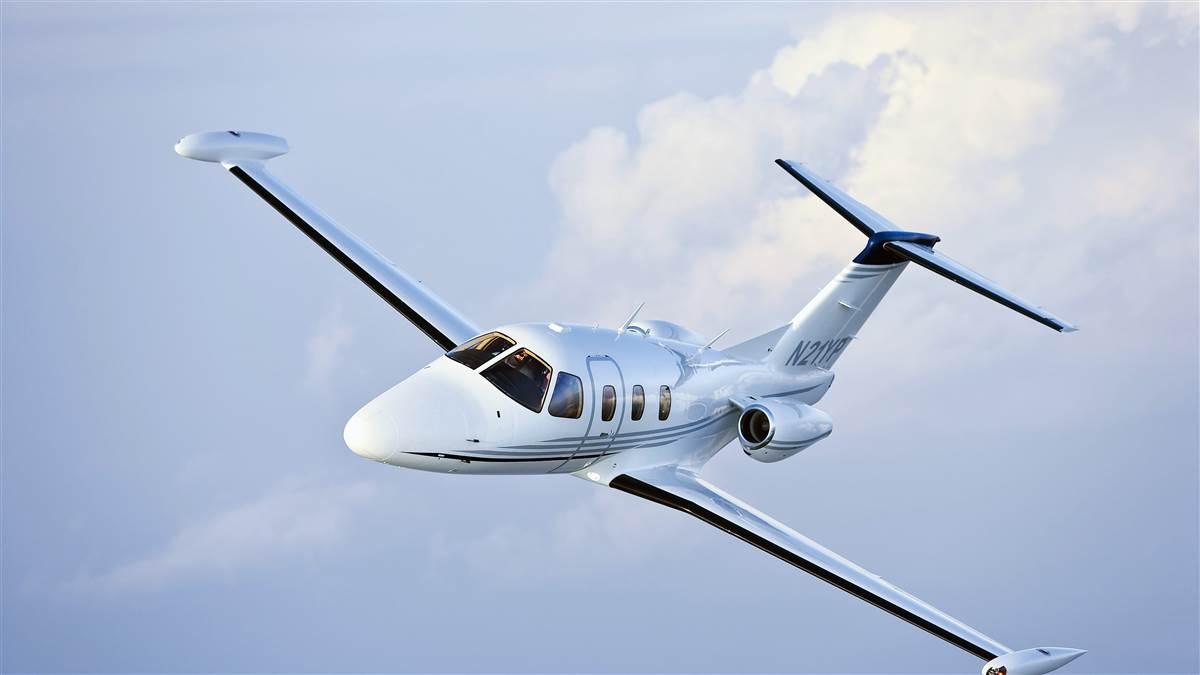 The innovative Eclipse light twinjethas struggled since birth to gain market share, but what it lacks in delivered units it makes up for in admiration by its owners. The company went bankrupt shortly after deliveries began in 2008. After a series of acquisitions, Cirrus Aircraft co-founder Alan Klapmeier now runs the company, which is called One Aviation. The company has been marketing upgrades to the legacy models and selling the 550, which features a host of system and avionics upgrades. The Project Canada version in development promises bigger engines, more performance, and a Garmin G3000 integrated cockpit.
The innovative Eclipse light twinjethas struggled since birth to gain market share, but what it lacks in delivered units it makes up for in admiration by its owners. The company went bankrupt shortly after deliveries began in 2008. After a series of acquisitions, Cirrus Aircraft co-founder Alan Klapmeier now runs the company, which is called One Aviation. The company has been marketing upgrades to the legacy models and selling the 550, which features a host of system and avionics upgrades. The Project Canada version in development promises bigger engines, more performance, and a Garmin G3000 integrated cockpit.
Eclipse’s friction-stir-welding manufacturing process gives it smooth skins and light weight. Current models feature the IS&S avionics system. It is the only light jet to include autothrottles.
SPEC SHEET
Eclipse 550 Price: $2.9 million
 Powerplant | 2 Pratt & Whitney PW610F, 900 lbst ea
Powerplant | 2 Pratt & Whitney PW610F, 900 lbst ea
Seats | 6
IFR range at high-speed cruise | 1,068 nm
Full-fuel payload | 702 lb
Max takeoff weight | 6,000 lb
Takeoff distance | 2,433 ft
High-speed cruise | 325 kt
Avionics | IS&S
Pacific AerospaceP–750 XSTOL
This multi-role aircraft stops on a dime
 New Zealand-based Pacific Aerospace’s P–750 XSTOL was originally built to haul skydivers, but it’s also used in crop dusting, firefighting, passenger transport, and for operations into rough and remote locales. The manufacturer boasts that it can take off and land in less than 800 feet while carrying a load greater than its own empty weight. The model was certified in the United States in 2004.
New Zealand-based Pacific Aerospace’s P–750 XSTOL was originally built to haul skydivers, but it’s also used in crop dusting, firefighting, passenger transport, and for operations into rough and remote locales. The manufacturer boasts that it can take off and land in less than 800 feet while carrying a load greater than its own empty weight. The model was certified in the United States in 2004.
The P–750 XSTOL earns its name with a takeoff distance of 721 feet and a landing ground roll of 543 feet.
SPEC SHEET
Pacific Aerospace P–750 XSTOL Price: $1.7 million to $2.2 million
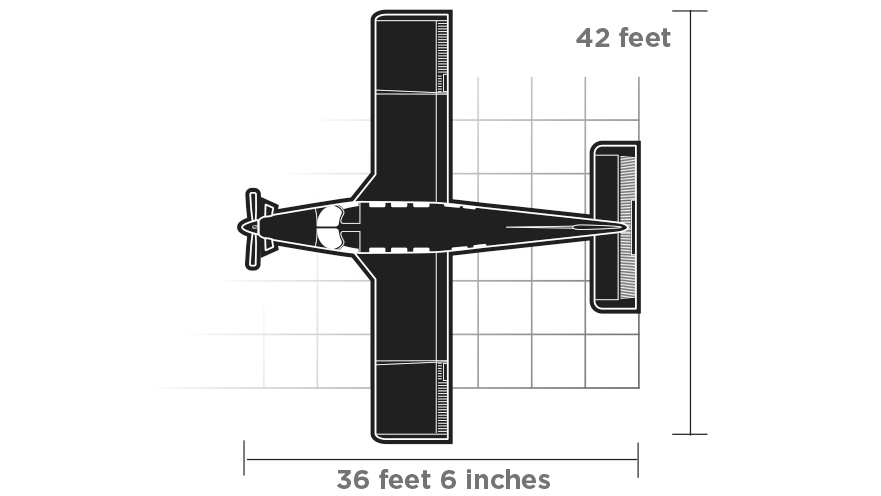 Powerplants | Pratt & Whitney PT6A-34, 750 shp
Powerplants | Pratt & Whitney PT6A-34, 750 shp
Seats | 10 (up to 17 parachutists)
IFR range at high-speed cruise | 1,172 nm
Full-fuel payload | 2,719 lb
Max takeoff weight | 7,500 lb
Takeoff over 50-ft obstacle | 1,503 ft
High-speed cruise | 168 kt
Avionics | IFR Garmin, King
Photo courtesy Pacific Aerospace
Piaggio P.180 Avanti Evo
Italian stallion on the ramp
 The Piaggio Avanti flies as fast and high as some corporate jets while burning about 30 percent less fuel, and its distinctive looks and Italian styling make it stand out on any ramp. The Avanti has been in production since 1986, and it is used extensively by both private and government operators in applications that include executive transport, air ambulance, and maritime patrol.
The Piaggio Avanti flies as fast and high as some corporate jets while burning about 30 percent less fuel, and its distinctive looks and Italian styling make it stand out on any ramp. The Avanti has been in production since 1986, and it is used extensively by both private and government operators in applications that include executive transport, air ambulance, and maritime patrol.
The Avanti (Italian for “forward”) is quiet inside but not outside. The noise comes from he propeller blades striking choppy air behind the fuselage and wings.
SPEC SHEET
Piaggio P.180 Avanti Evo Price: $7.4 million
 Powerplant | 2 Pratt & Whitney PT6A-66B, 850 shp ea
Powerplant | 2 Pratt & Whitney PT6A-66B, 850 shp ea
Seats | 10
IFR range at high-speed cruise | 1,490 nm
Full-fuel payload | 1,298 lb
Max takeoff weight | 12,100 lb
Takeoff distance | 3,190 ft
High-speed cruise | 402 kt
Avionics | Rockwell Collins Pro Line 21
www.avantievo.piaggioaerospace.it
Photo courtesy Piaggio
Pilatus PC–12NG
A stylish heavy-hauler that does it all
 If the TBM 910 and 930 are the personal hot rods of the single-engine turboprop world, then Swiss manufacturer Pilatus’ PC–12NG is the stately multipurpose utility vehicle. With a huge cabin that can be set up in a roomy, six-place executive configuration, as an 11-seat high-density shuttle, or a seats-free strictly cargo hauler, the airplane appeals to a wide customer base—and its 1,400-plus sales prove it. Its forward airstair door, combined with a massive aft cargo door, allows operators to board even the largest loads. Fractional operator PlaneSense has a fleet of 35 PC–12NGs.
If the TBM 910 and 930 are the personal hot rods of the single-engine turboprop world, then Swiss manufacturer Pilatus’ PC–12NG is the stately multipurpose utility vehicle. With a huge cabin that can be set up in a roomy, six-place executive configuration, as an 11-seat high-density shuttle, or a seats-free strictly cargo hauler, the airplane appeals to a wide customer base—and its 1,400-plus sales prove it. Its forward airstair door, combined with a massive aft cargo door, allows operators to board even the largest loads. Fractional operator PlaneSense has a fleet of 35 PC–12NGs.
PC–12NGs are built in the company’s plant in Stans, Switzerland, which is a backdrop in the early scenes of the James Bond film Goldfinger. From there, it’s a short taxi across a public road to Pilatus’ runway.
SPEC SHEET
Pilatus PC–12NG Price: $4.9 million
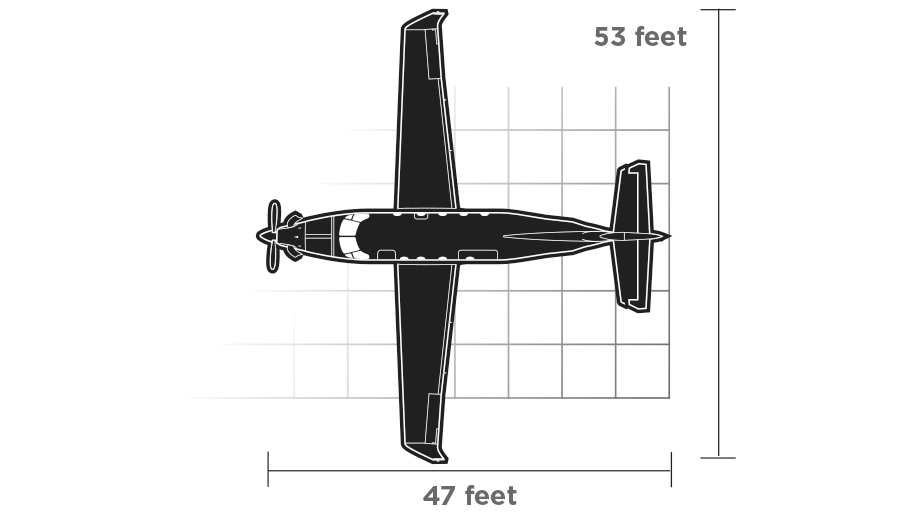 Powerplant | Pratt & Whitney PT6A-67P, 1,200 shp
Powerplant | Pratt & Whitney PT6A-67P, 1,200 shp
Seats | 8-11
IFR range at high-speed cruise | 1,845 nm
Full-fuel payload | 1,009 lb
Max takeoff weight | 10,450 lb
Takeoff over 50-ft obstacle | 2,602 ft
High-speed cruise | 285 kt
Avionics | Honeywell Apex
Piper M500
This is not your father’s Meridian
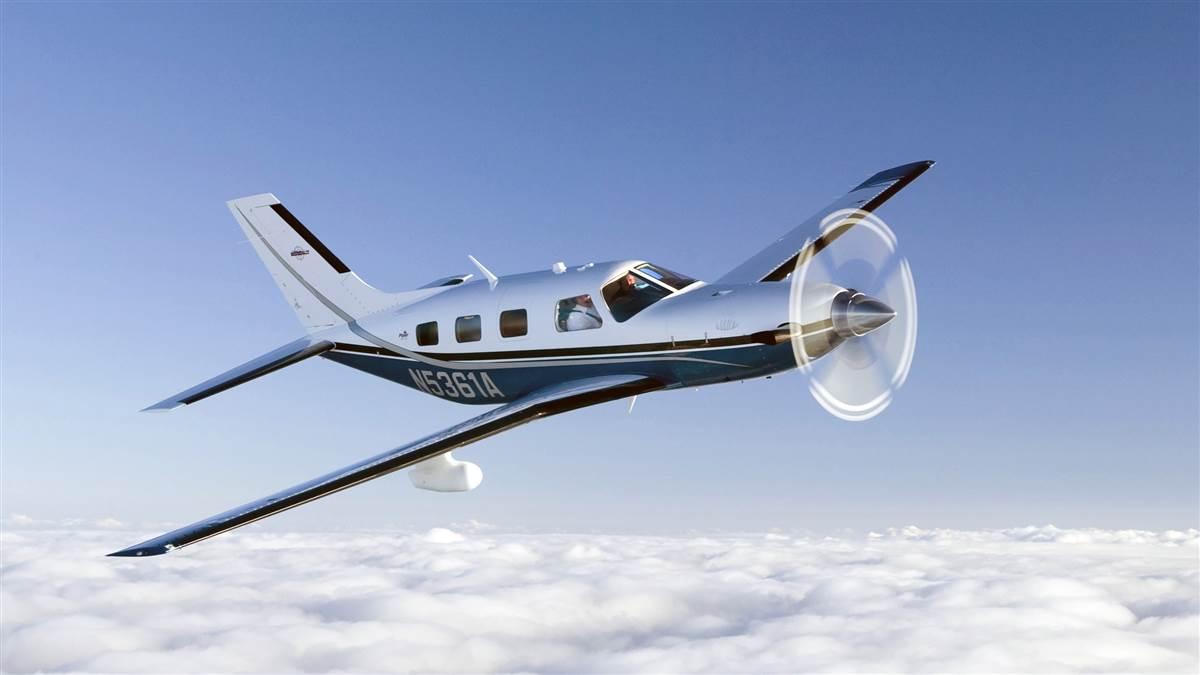 An evolution of Piper’s original turboprop,the M500 cockpit features a significantly upgraded iteration of the Garmin G1000 avionics suite that the Meridian has used since 2009. It provides underspeed protection and coupled go-arounds—all while Garmin’s synthetic vision technology heightens situational awareness. Electronic stability protection works passively to keep the aircraft within its flight envelope. The M500 retains the design’s roomy cabin, accessed via an airstair door, with natural leather seats. And also like its Meridian predecessor, the M500 is among the least-expensive certified turboprops in production.
An evolution of Piper’s original turboprop,the M500 cockpit features a significantly upgraded iteration of the Garmin G1000 avionics suite that the Meridian has used since 2009. It provides underspeed protection and coupled go-arounds—all while Garmin’s synthetic vision technology heightens situational awareness. Electronic stability protection works passively to keep the aircraft within its flight envelope. The M500 retains the design’s roomy cabin, accessed via an airstair door, with natural leather seats. And also like its Meridian predecessor, the M500 is among the least-expensive certified turboprops in production.
It’s all about the wing. The M500’s is beefier than the Meridian’s, to carry more fuel for the thirstier turbine and support the additional weight. The M600’s wing is bigger still.
SPEC SHEET
Piper M500 Price: $2.1 million
 Powerplant | Pratt & Whitney PT6A-42A, 500 shp
Powerplant | Pratt & Whitney PT6A-42A, 500 shp
Seats | 6
IFR range at high-speed cruise | 1,000 nm
Full-fuel payload | 559 lb
Max takeoff weight | 5,092 lb
Takeoff over 50-ft obstacle | 2,438 ft
High-speed cruise | 260 kt
Avionics | Garmin G1000
Piper M600
What a difference a wing makes
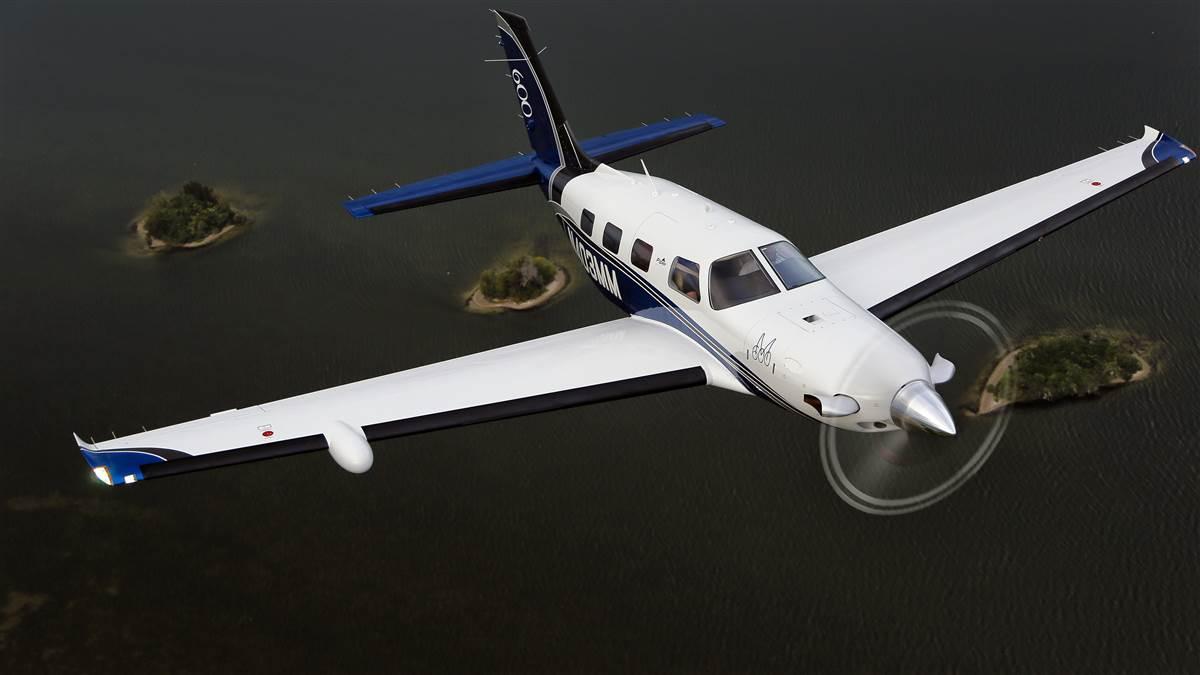 Piper’s flagship M600gains significant capabilities from a new, clean-sheet wing design that adds 90 gallons of fuel capacity and boosts the maximum takeoff weight to 6,000 pounds. Its larger tanks increase the M600’s IFR range with reserves to 1,300 nautical miles.
Piper’s flagship M600gains significant capabilities from a new, clean-sheet wing design that adds 90 gallons of fuel capacity and boosts the maximum takeoff weight to 6,000 pounds. Its larger tanks increase the M600’s IFR range with reserves to 1,300 nautical miles.
The M600 comes with Garmin’s touchscreen G3000 avionics suite, including autopilot, enhanced automated flight control system, and synthetic vision. Flight into known icing capability and air conditioning also are standard; options include a terrain awareness and warning system, traffic advisory system, and Iridium satellite transceiver.
Throttle back to an economy cruise of 184 KTAS, and watch the M600’s range (with NBAA IFR reserves) jump to 1,484 nautical miles.
SPEC SHEET
Piper M600 Price: $3 million
 Powerplant | Pratt & Whitney PT6A-42A, 600 shp
Powerplant | Pratt & Whitney PT6A-42A, 600 shp
Seats | 6
IFR range at high-speed cruise | 1,085 nm
Full-fuel payload | 658 lb
Max takeoff weight | 6,000 lb
Takeoff over 50-ft obstacle | 2,635 ft
High-speed cruise | 274 kt
Avionics | Garmin G3000
Quest Aircraft Kodiak 100
One tough customer
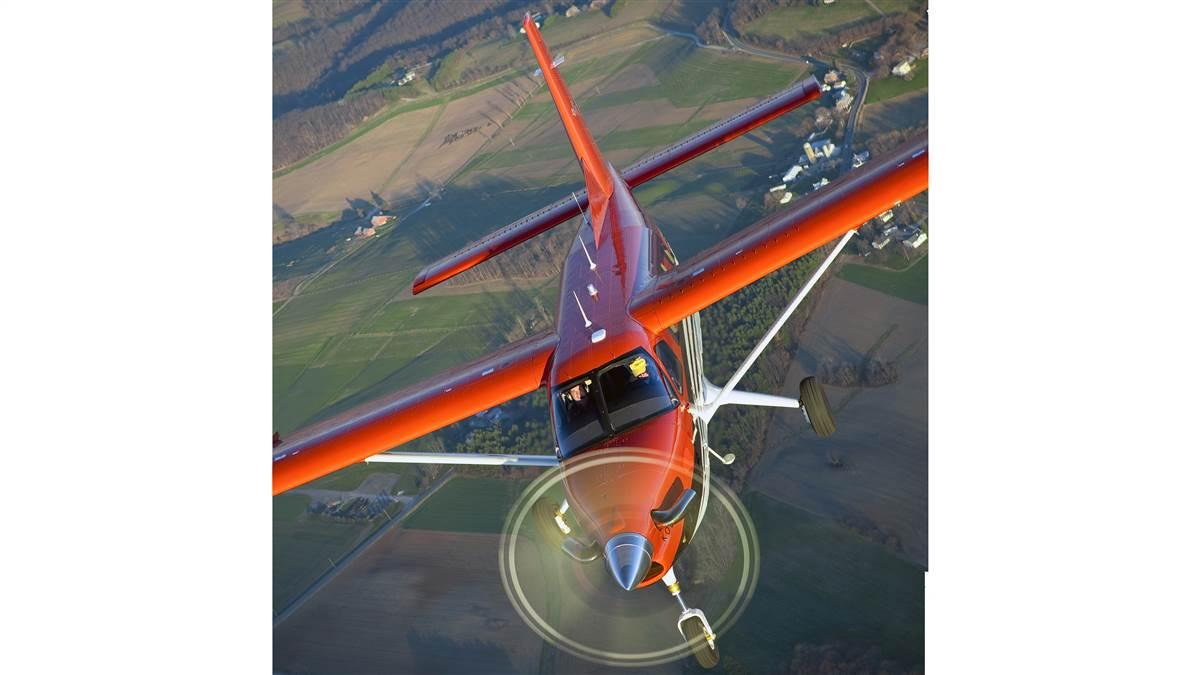 The Kodiak was designed for missionaries working in some of the most rugged, remote, and harsh places on Earth. Narrow, rutted, high-elevation fields in New Guinea and short, muddy strips in equatorial Africa were its primary destinations. The Kodiak also has been discovered by outfitters, government agencies, charter operators, and individual owners who have fitted the aircraft with accessories such as amphibious floats and executive interiors. The Kodiak is proving itself to be as versatile as it is tough.
The Kodiak was designed for missionaries working in some of the most rugged, remote, and harsh places on Earth. Narrow, rutted, high-elevation fields in New Guinea and short, muddy strips in equatorial Africa were its primary destinations. The Kodiak also has been discovered by outfitters, government agencies, charter operators, and individual owners who have fitted the aircraft with accessories such as amphibious floats and executive interiors. The Kodiak is proving itself to be as versatile as it is tough.
Kodiak designer and co-founder Tom Hamilton was part of Stoddard-Hamilton, a startup firm that developed the sleek line of Glasair kit airplanes.
SPEC SHEET
Kodiak 100 Price: $2.45 million
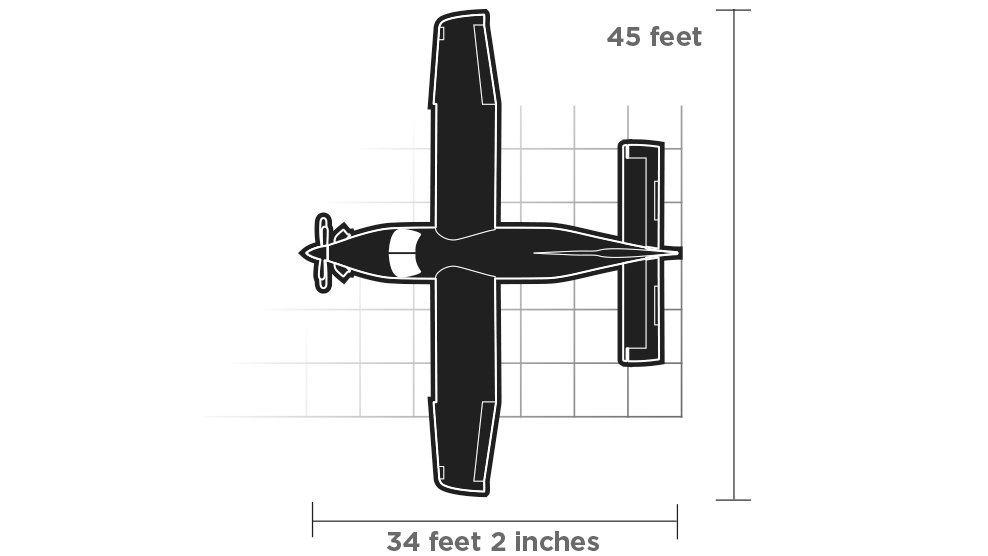 Powerplant | Pratt & Whitney PT6A-34, 750 shp
Powerplant | Pratt & Whitney PT6A-34, 750 shp
Seats | 10
IFR range at high-speed cruise | 1,005 nm
Full-fuel payload | 1,387 lb
Max takeoff weight | 7,255 lb
Takeoff over 50-ft obstacle | 1,468 ft
High-speed cruise | 183 kt
Avionics | Garmin G1000



